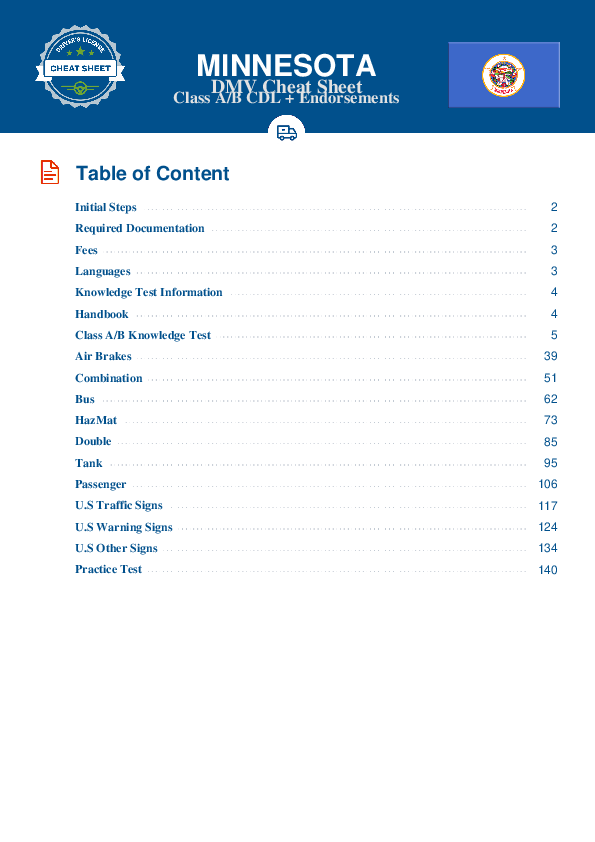Air Brakes Endorsement Test | Minnesota 2025 #2 Page 4 of 4
Train for FREE online with our Minnesota CDL air brake test. The official exam test consists of several obligatory parts, with all of them checking your knowledge of different blocks of road rules. If you need to obtain a MN Class A/Class B driver license in 2025, practice as much as possible. Free sample tests published on our website will help you check and improve your knowledge and boost your grades. Please bear in mind that the requirements for CDL may vary from state to state.
19 . Service brakes should:
Before driving, you should always verify that your service brakes are in good working order. Testing the brakes before a trip allows you to locate any problems before you need to brake while on the road.
20 . In an empty combination vehicle, the stiff suspension springs and strong brakes will have:
An empty combination vehicle will come to a complete stop more slowly than a fully-loaded vehicle. With less weight in a trailer, the stiff suspension springs and strong brakes will have lower traction than they would if the vehicle carried more weight.
21 . A driver can rely on front wheel braking to work:
Front wheel braking is effective under all road conditions. It is unlikely that you will experience a front wheel skid, even on ice.
22 . Before driving a vehicle with air brakes, you should ensure that the ____ come on automatically when air pressure falls below 45 psi.
Before driving a vehicle with air brakes, you should ensure that the spring brakes come on automatically when air tank pressure falls to a level between 20 and 45 psi. You can do this by chocking the wheels and releasing air from the braking system by stepping on and off the brake pedal. Once the pressure levels drop to an unsafe level, the parking brake valve should pop out and spring brakes should come on.
23 . The most common type of foundation brake used is the:
The most common type of foundation brake is an s-cam drum brake.
24 . If colors are being used to distinguish glad hands, which color is used for service lines?
When trailer air lines are color-coded, the service lines are generally blue and the emergency lines are generally red.
25 . The service air line is often controlled by the foot brake and is attached to the ____ valves.
The service air line carries air and is controlled by either the foot brake or trailer hand brake. The service air line is attached to relay valves, which allow the trailer brakes to be applied quickly.
See the exact questions that will be on the 2025 Minnesota DMV exam.
99.2% of people who use the cheat sheet pass the FIRST TIME
Lillian MCcranie explains how our CDL study guide was helpful in passing the exam and recommends it to everyone.
Cameron tells us how he purchased the CDL exam, and found it to be a useful tool which helped him pass the exam and find a job.



